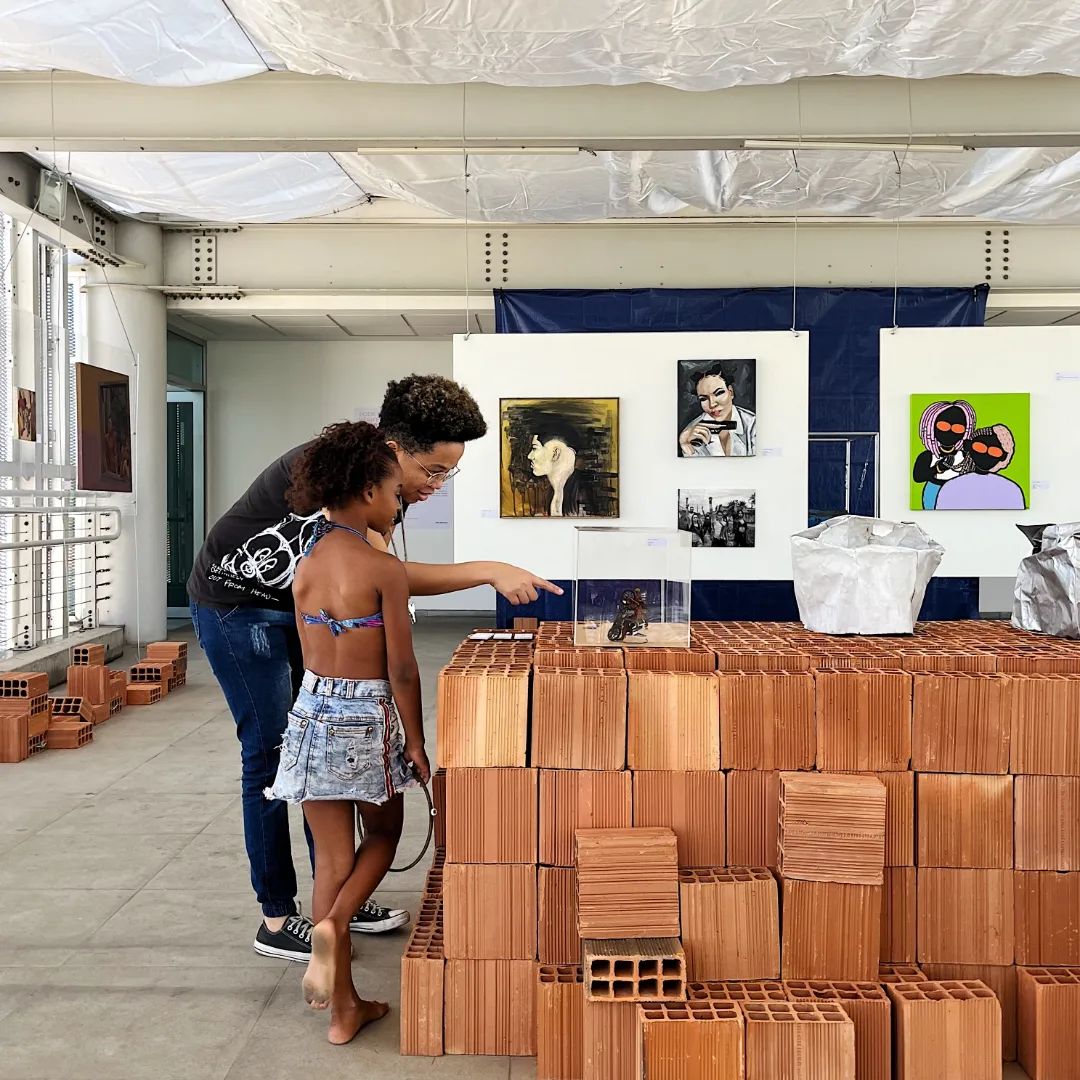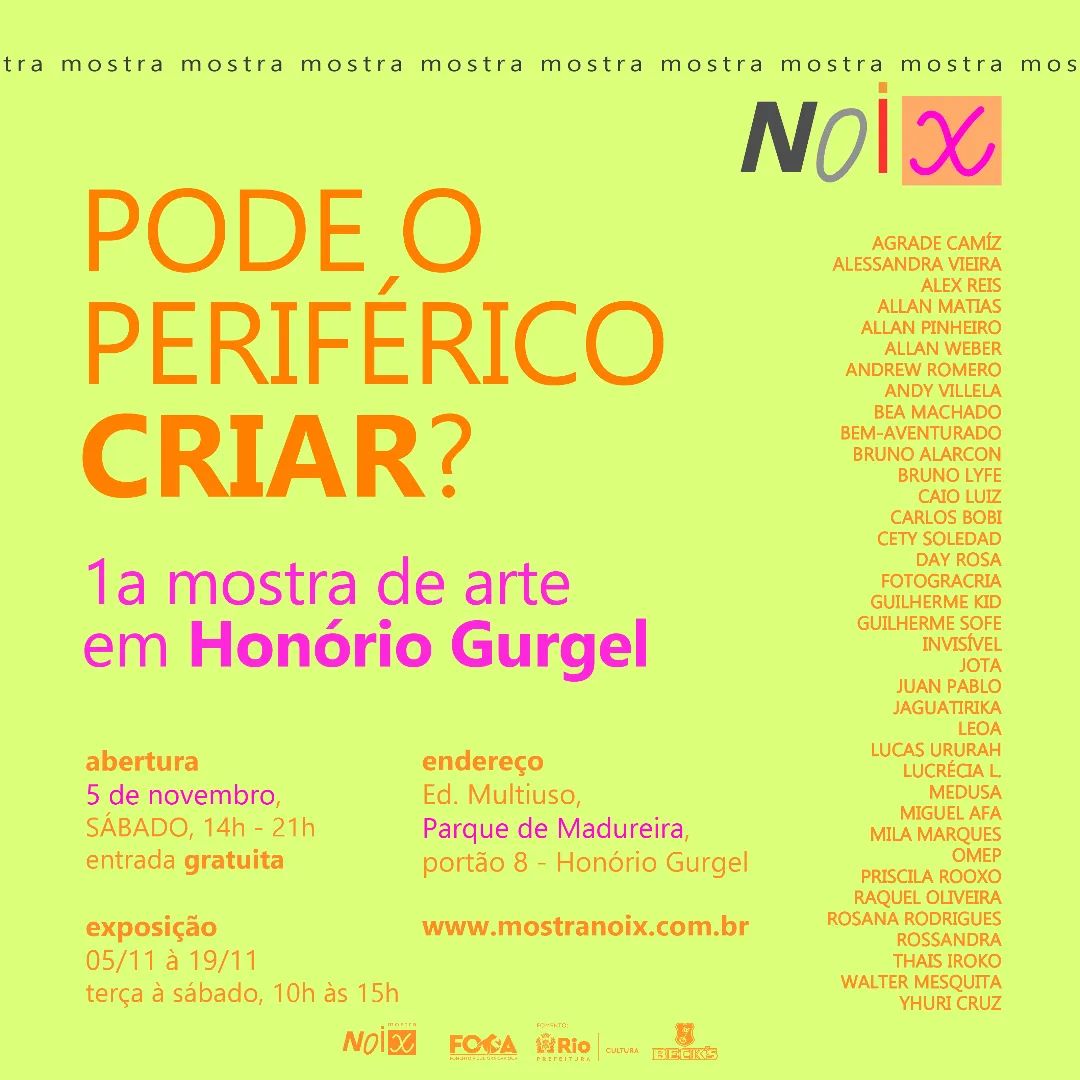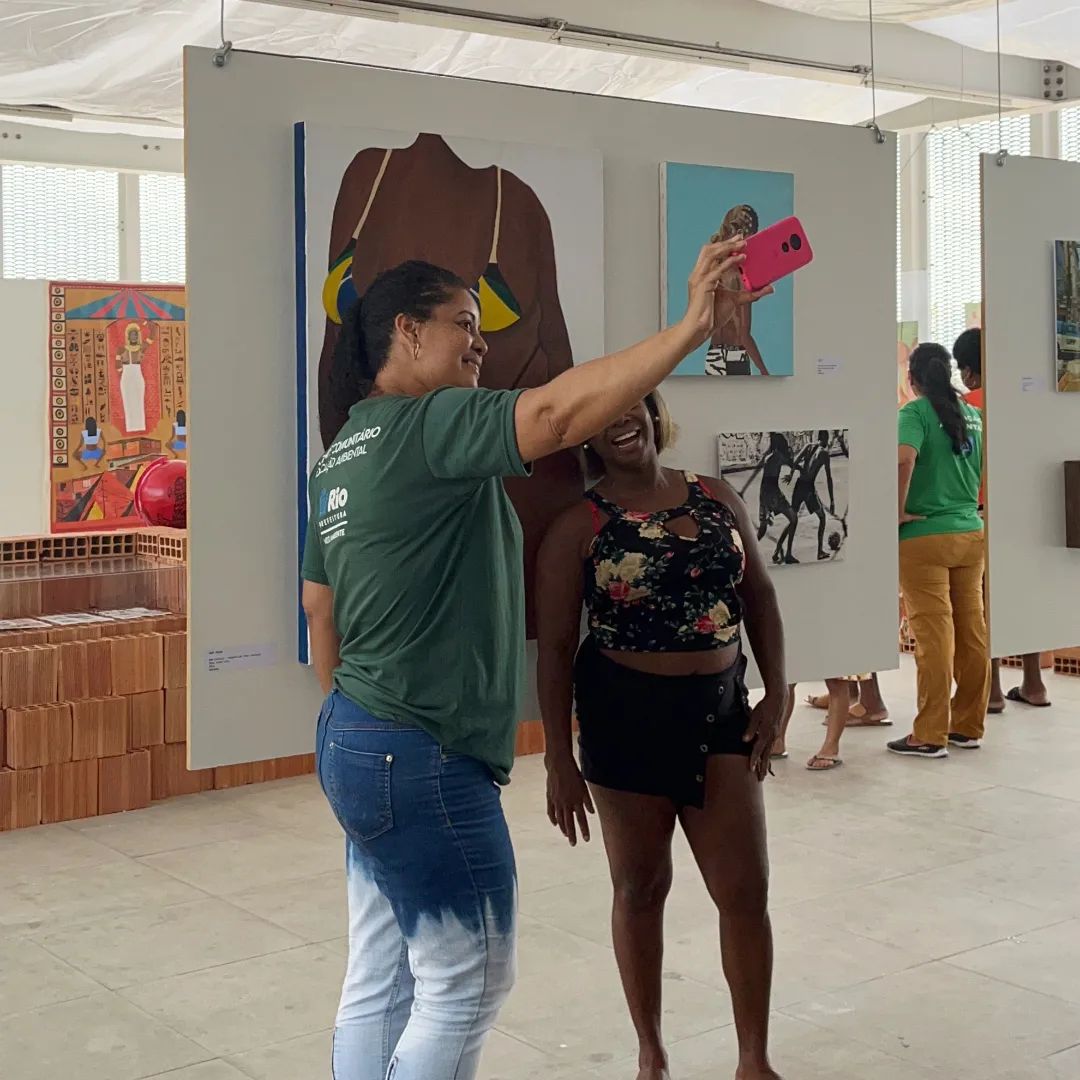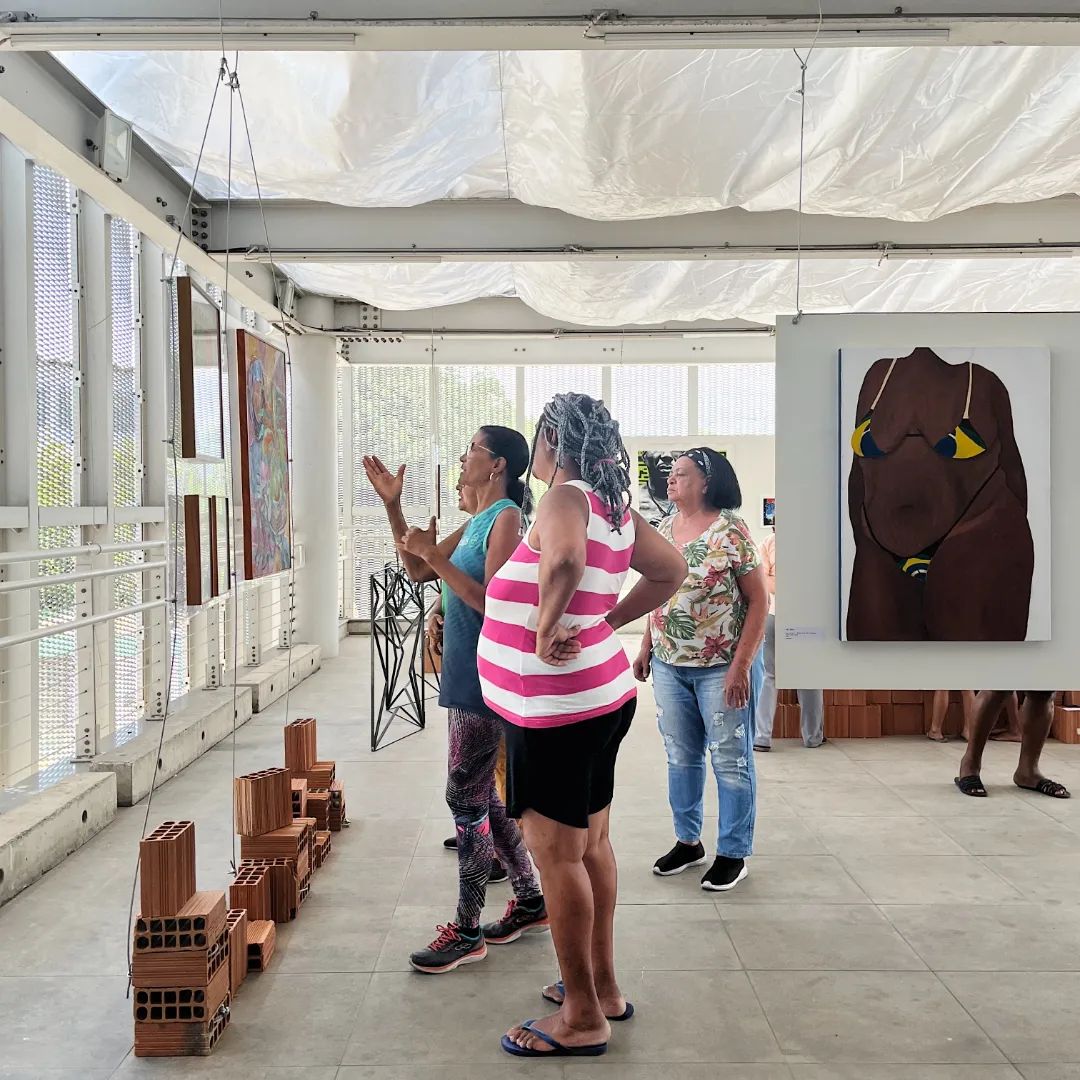

In November 2022, a group of eight women residents of Rio’s favelas, suburbs, and peripheries put on Mostra Noix, the first fine art exhibition in the history of Honório Gurgel, a neighborhood in the city’s North Zone. Despite being the birthplace of contemporary global musical and cultural icon and superstar Anitta, the neighborhood has never had concert halls, a movie theater, cultural centers, live theater, or art exhibitions. Unfortunately, a lack of public support and adequate arts spaces are common in most of Rio’s peripheries and favelas.
The first edition of Mostra Noix was an artistic and cultural installation that drew 1,714 visitors between November 5 and 19 at the Multipurpose Building in Madureira Park. The project aimed to disrupt the typical Downtown–South Zone art circuit and featured a diversity of works, techniques, themes, and artists. The exhibition brought together works across the fields of painting, photography, sculpture, and video installation. All the exhibition content was produced by artists who identify as Black, indigenous, LGBTQIAP+, and people with disabilities from various favelas and peripheries across Rio.
“We believe that Mostra Noix’s importance in Honório Gurgel is closely related to the movement for visibility and sharing the strengths of Rio’s suburbs, favelas, and peripheries. And doing this also prioritizes such initiatives happening in our territories. Our experience reflects this in practice in many ways. It stretched one’s imagination about what an art exhibition is, and about who and where can produce art,” explained Ariane Pereira, one of the event creators.
View this post on Instagram
The 1st edition of Mostra NOIX ends this Saturday (19/11). If you still haven’t been, there’s still time! We’re really happy with all the repercussion and affection we’ve received during the whole process. So we’d like to thank everyone that got involved: whether that’s on the job, with a job, or if you just came to have fun with us.
We especially thank those who helped install the exhibition so everything was lined up for the opening:
Claudia de Oliveira
Edil Oliveira
Felipe Monteiro
Gabriel Oliveira
Marcos Reis
Maria da Penha
Marieta Mendonça
Rafael Oliveira
Vinícius MedeirosAftermovie: Marcos Reis @brmarcos__
Music: Automóvel Clube (Remix) – Marcão da Baixada (@marcaobaixada) feat. Diego MC (@diegomcof) e Slain (@slainnnn)To those who are going to come along by Saturday: we’ll see you there.
To those who’ll come back for the next edition: We’ll be back soon!!!
The Mostra Noix exhibition was carried out with funds from the Rio Culture Promotion Support Fund (FOCA) organized by the City of Rio de Janeiro’s Municipal Secretariat of Culture. The initiative’s success shows how government support is fundamental for such events to happen in places which are generally not catered to by the cultural sector.

Public policies are needed to popularize diverse art forms that encourage the spread of cultural facilities and opportunities for the public promotion of art collectives and groups from favelas and peripheries. Often, they are the only ones offering access to culture in these areas.

About the author: Felipe Migliani has a degree in journalism from Unicarioca with a focus on Investigative Journalism. Working as an independent journalist and freelance reporter at Meia Hora and Estadão newspapers, he collaborates with the Coletivo Engenhos de Histórias, which investigates and recovers history and memories from the Grande Méier region, and with PerifaConnection.
